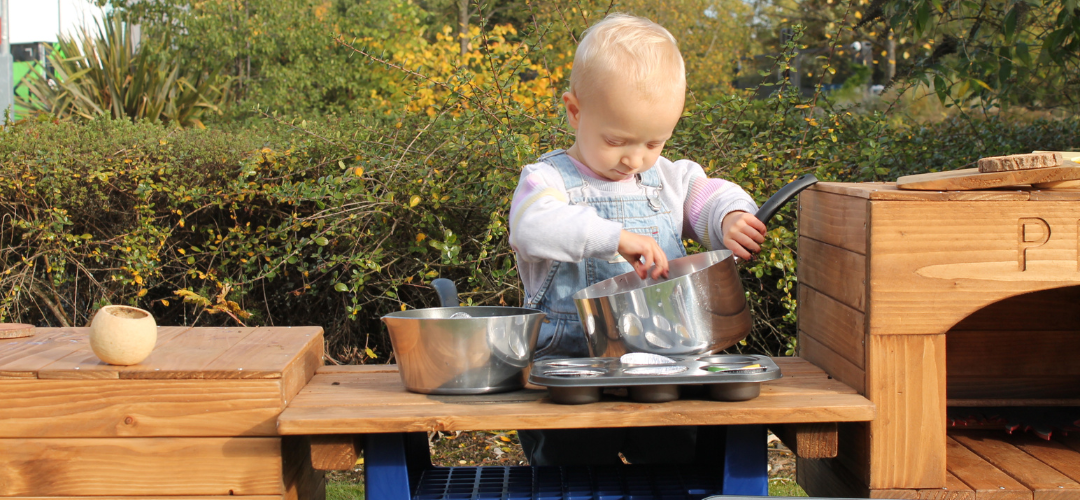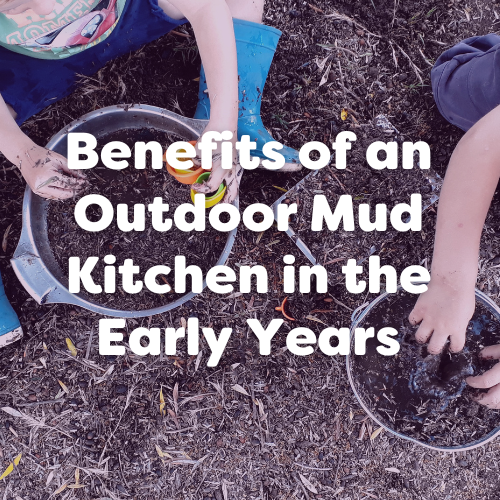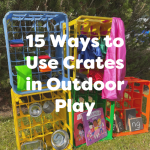“Mud, Mud Glorious Mud!”
Outdoor provision in the early years is always high on every practitioner’s agenda. Over the years more focus has been put towards implementing outdoor learning experiences. There has been growing concern that classroom based learning alone lacks the flexibility to provide enriched learning opportunities. Considered restrictive, it often leaves children disconnected from nature.
Creating the right setting for young children is vital in making sure they have real, direct and hands on experiences. This is done through the use of natural materials and letting children get their hands dirty! Creating a mud kitchen will provide valuable and vital experience whilst embracing the great outdoors!

What is a Mud Kitchen?
A mud kitchen is just what it says! A kitchen for mud but tremendously enhanced by the special nature of being outside. Mud kitchens take the concept of familiar play in the home corner from indoor to outdoors. Using natural materials children are free to explore and investigate without the restraints of being indoors. Not just a summer activity, mud kitchens should be made accessible all year round! A mud kitchen can be as simple or extravagant as required! Making your own mud kitchen could be as simple as using an old cupboard with pieces of wood for worktops. Or setting up your own kitchen area with a purpose built unit, shelves and table.
Benefits of an Outdoor Kitchen
Mud kitchens allow children to experience first-hand the joys of mud and all that goes with it. Mud can be calming due to its tactile qualities. Add twigs, grass, stones, water, leaves and other natural materials and you have a full-blown sensory experience. As they dig, smear, flick and mix, they’re able to better connect with the environment by feeling various natural materials. Not only does a mud kitchen engage with children’s desire to make connections and curiosity but also supports their natural desire to imagine, create, discover and explore.
Making a mud kitchen – the basics
The correct working surface, shelves and cupboards are key elements of an effective mud kitchen. However this could be as large or as small as your setting allows. You could start with a ready built kitchen or look to create a more flexible kitchen using moveable crates and toppers, tyres or even our outdoor sink unit.
A good basic selection of pots, pans, jugs, funnels, kitchen utensils, bowls and containers is key to allowing children to engage in various experiences. Enhancing these resources with more unique and unusual ones such as tongs, pestle and mortar or ice cream scoops can change and enrich the children’s experiences.
As well as the obvious resource – mud – supplies of sand, gravel, pebbles and other natural materials, plants and other ‘special’ ingredients such as herbs, spices, chalk or food colouring are essential to enhance the ingredients in their concoctions. The other necessary resource is a water supply. This doesn’t have to be a tap right next to the mud kitchen but containers, such as watering cans or bowls, should be available for transporting water from a water source. A chalk board is also a great addition to a mud kitchen to enhance role play and mark making opportunities.

We would love to see your mud kitchens! Share your images with us on social media by tagging us or using the hashtag #ExploreWithEYR!





